The weather’s been getting warmer here in New York City but I’ve been having brutal cravings for a spicy hearty stew, specifically – Kimchi Soondubu Jjigae or Kimchi Soft Tofu Stew. You might think that stews are commonly eaten during the colder months but honestly, I can have this any time of the year!
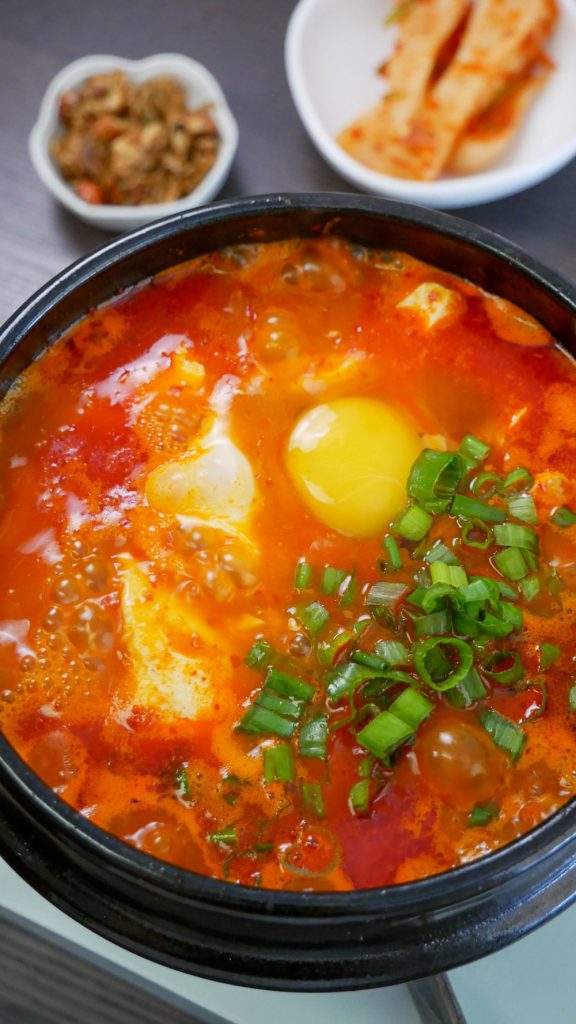
Why you’ll love this recipe
This kimchi soondubu jjigae is a comforting meal that is guaranteed to warm your body and soul. It’s packed with bold flavors – from the tangy kimchi to the juicy tender pork to the soft silky tofu. The spiciness from the gochugaru oil packs a punch, which is perfect for spicy food lovers, like me!
There are many variations of soondubu jjigae and the best thing about this dish is how easily customizable it is. Aside from the foundational ingredients like scallions, onion, gochugaru, and fish sauce (or your choice of seasoning), you can swap out any ingredients or add ones that you like. Thanks to its versatility, you can have soondubu jjigae in a multitude of ways, so I recommend experimenting with ingredients that you prefer or have on hand. When it’s time for a fridge cleanout, I’ll usually toss any leftover ingredients into the stew! If you’re a fan of seafood, check out my Seafood Soondubu recipe!
Whether you’re looking for an easy pick-me-up meal or a quick and delicious weeknight dinner, this stew will get the job done!
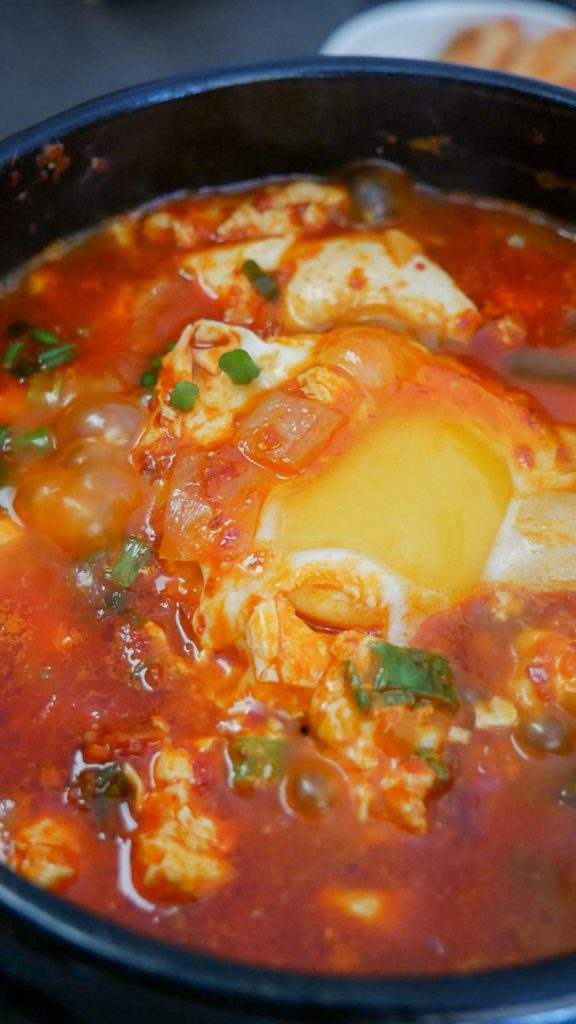
How do I prepare Kimchi Soondubu Jjigae?
To get started, just follow these simple steps below!
Step 1: Prepare the anchovy broth

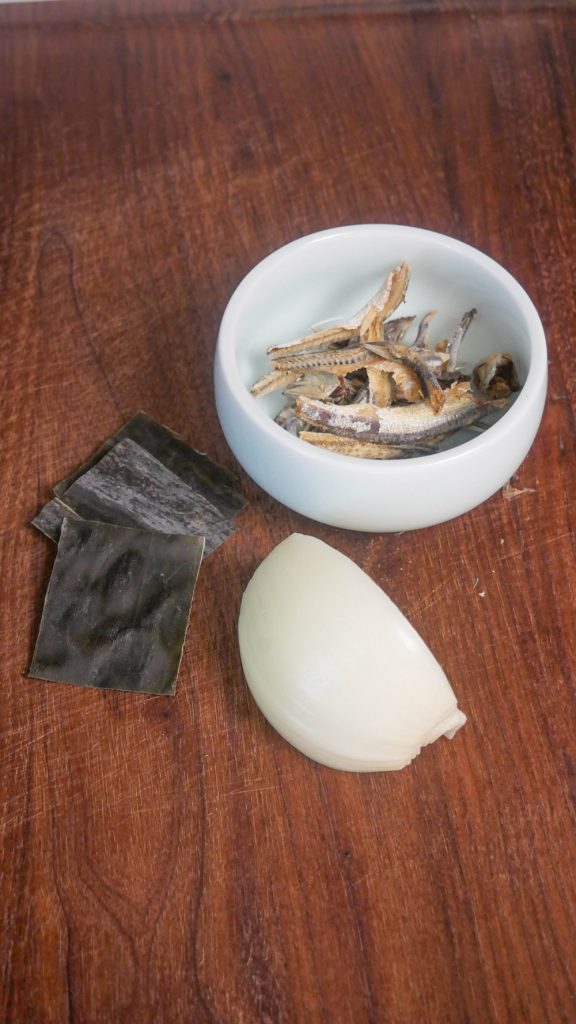
Start by removing the innards of the dried anchovies.
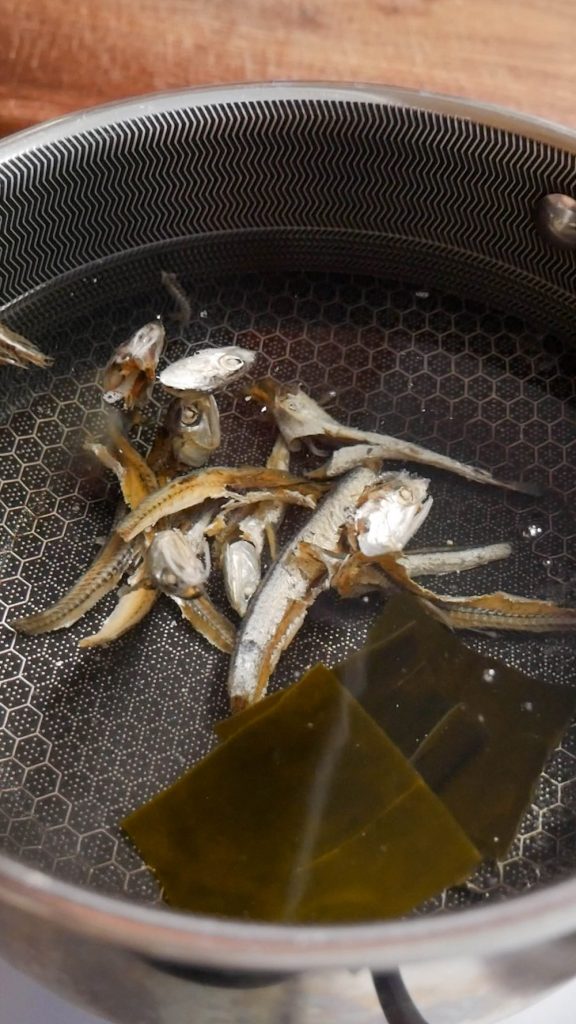
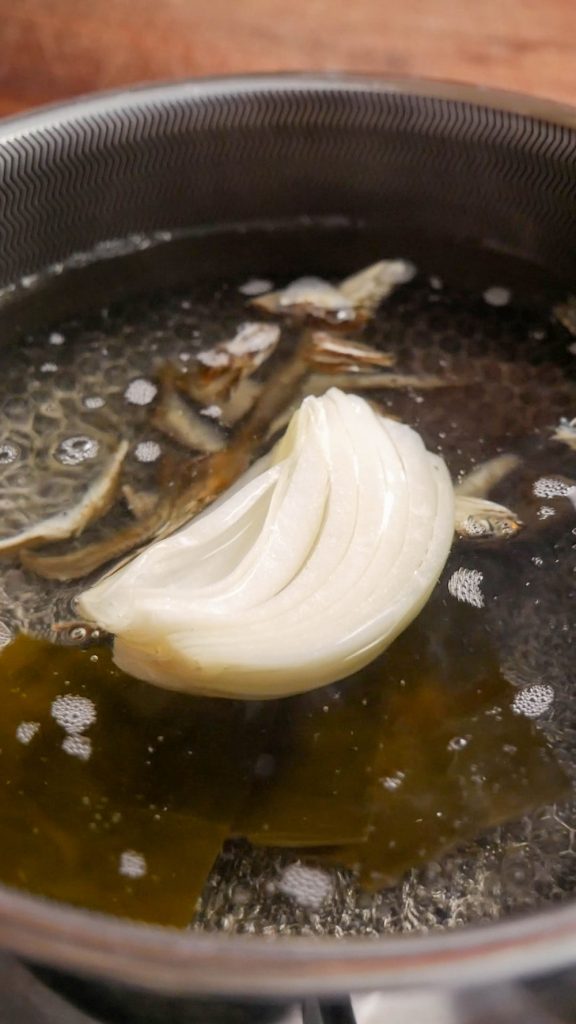
In a medium-sized pot, combine water, onion, dried anchovies, and kelp.
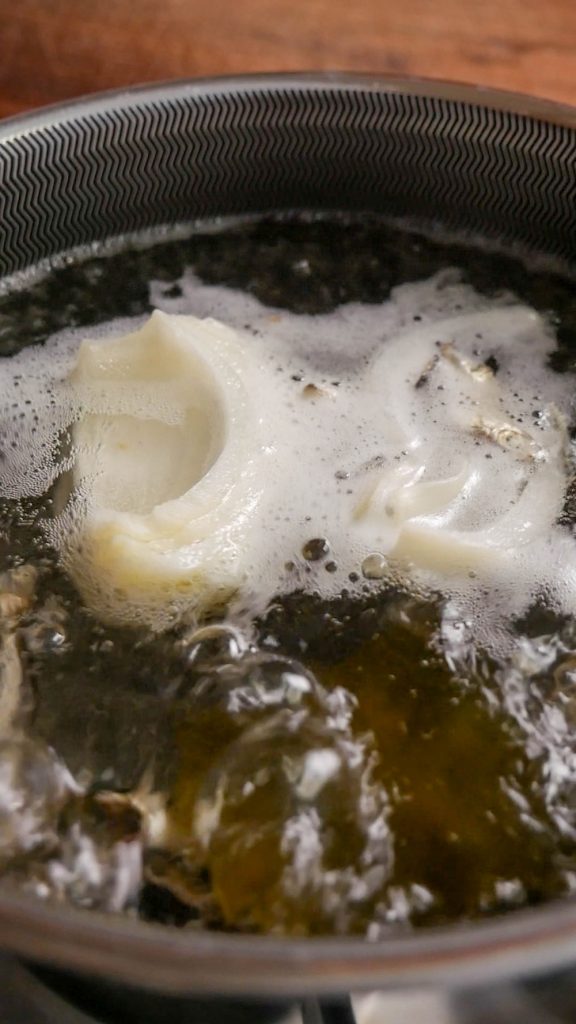
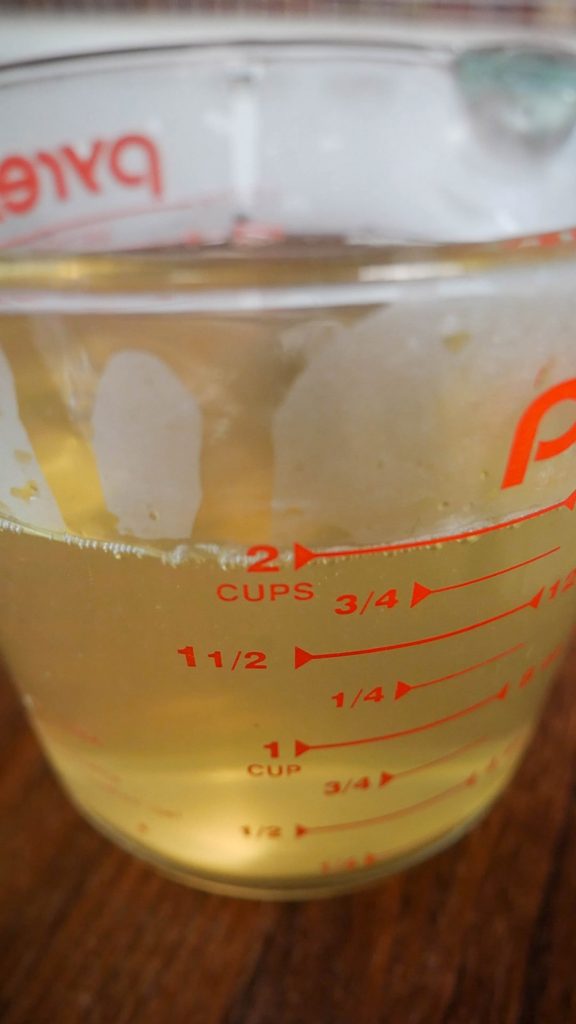
Boil over medium heat for 20 minutes or until reduced by half. Strain then set aside until it’s ready to be used.
Step 2: Prep the ingredients
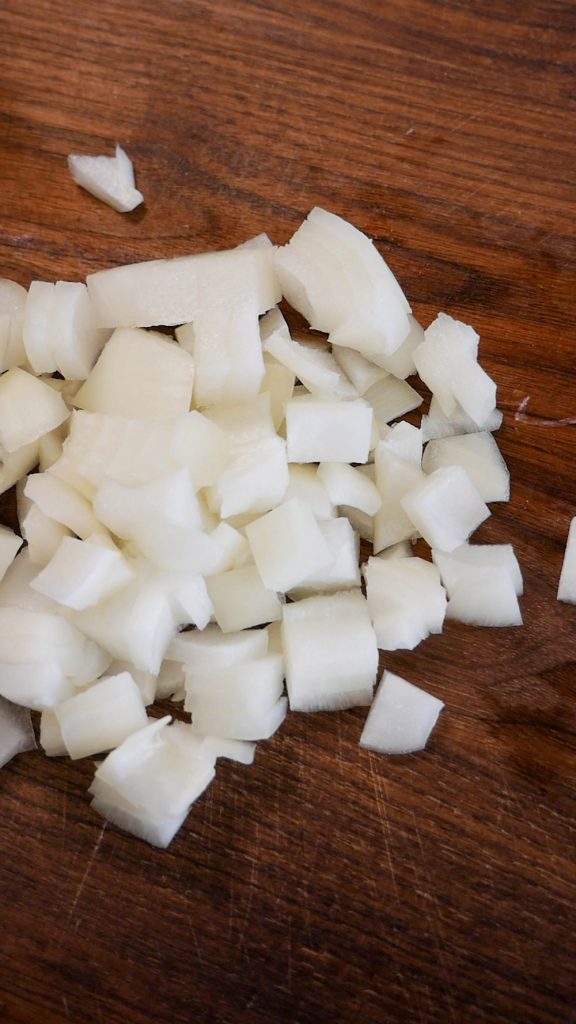

Chop the scallions, onions, and garlic cloves. Keep the white and green parts of the scallions separate.

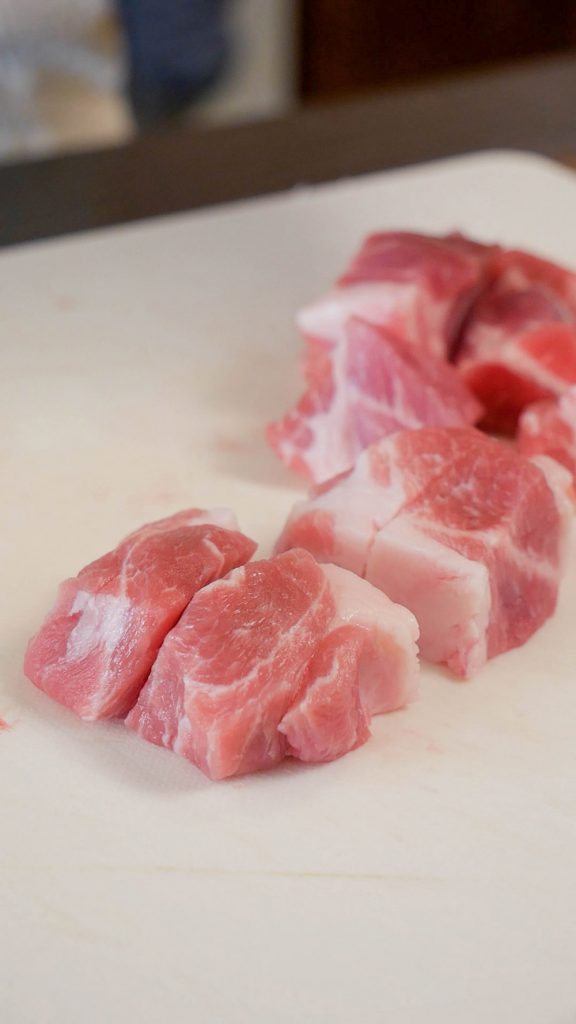
Cut the pork shoulder into 1-inch cubes. Set everything aside until ready to use.
Step 3: Make the scallion oil
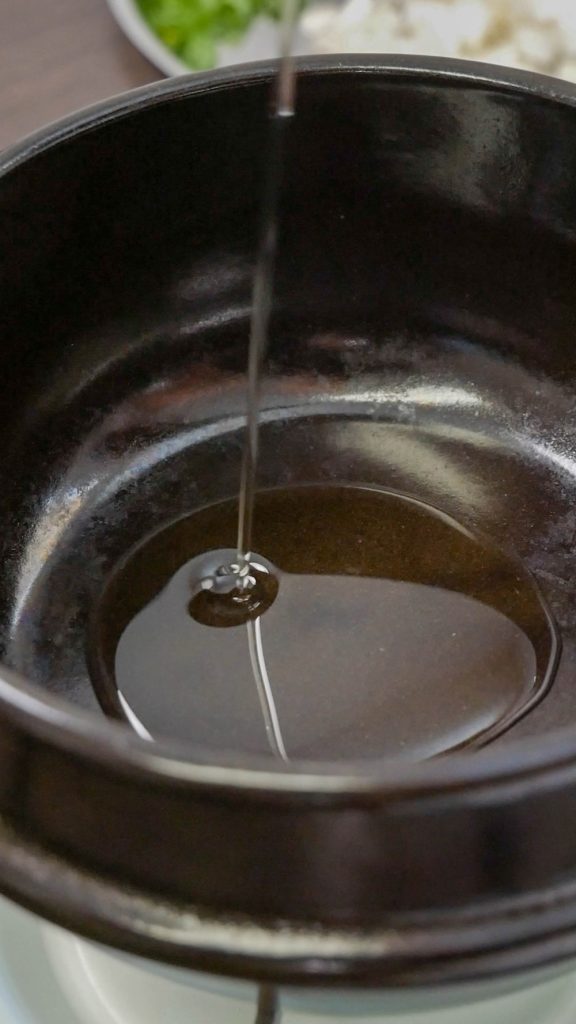
Heat a ddukbaegi (Korean earthenware pot) or medium-sized pot over medium-low heat. Add oil and the white part of the scallions.

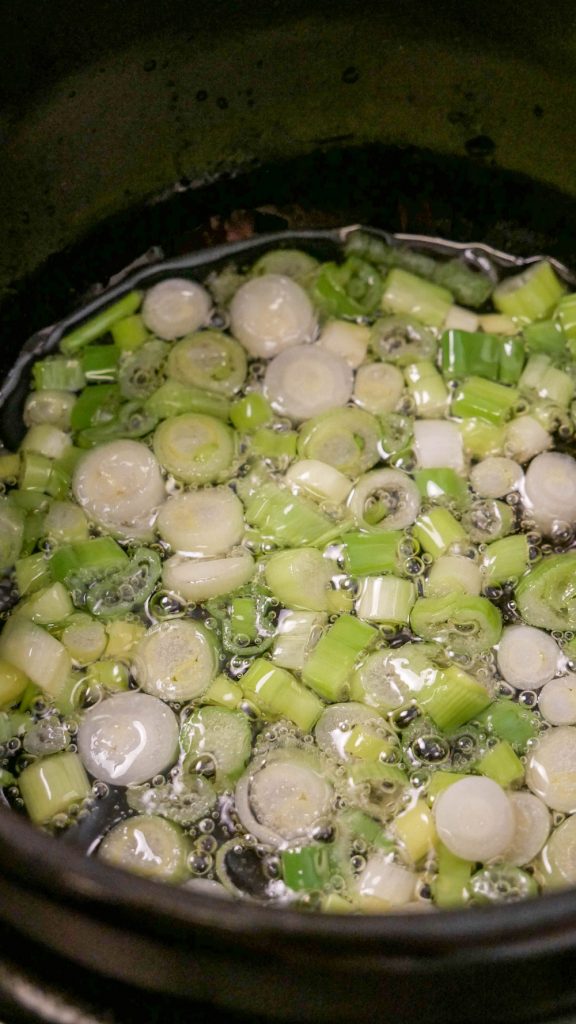
Cook for 2 to 3 minutes, making sure not to burn the scallions.
Step 4: Cook the pork
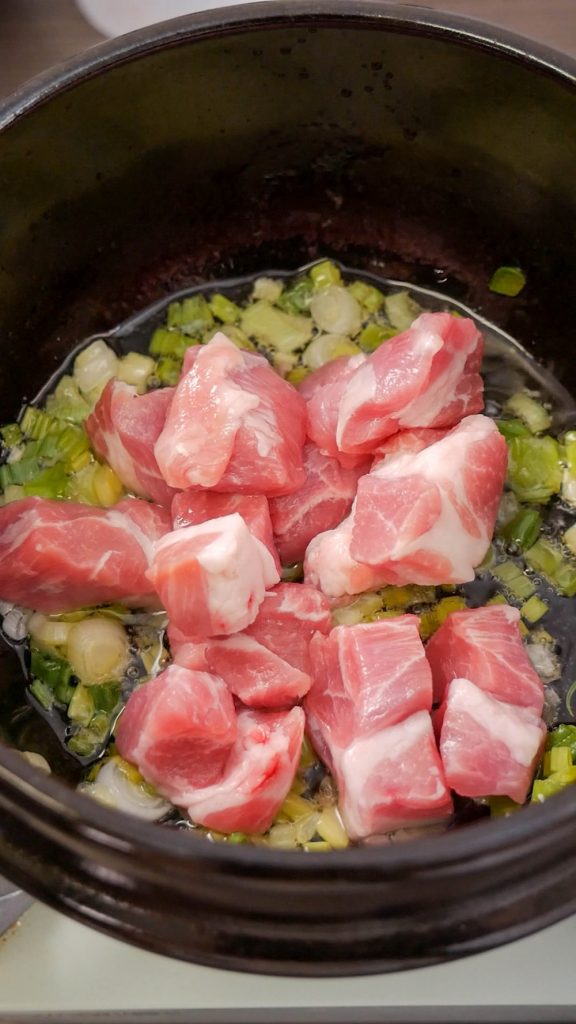
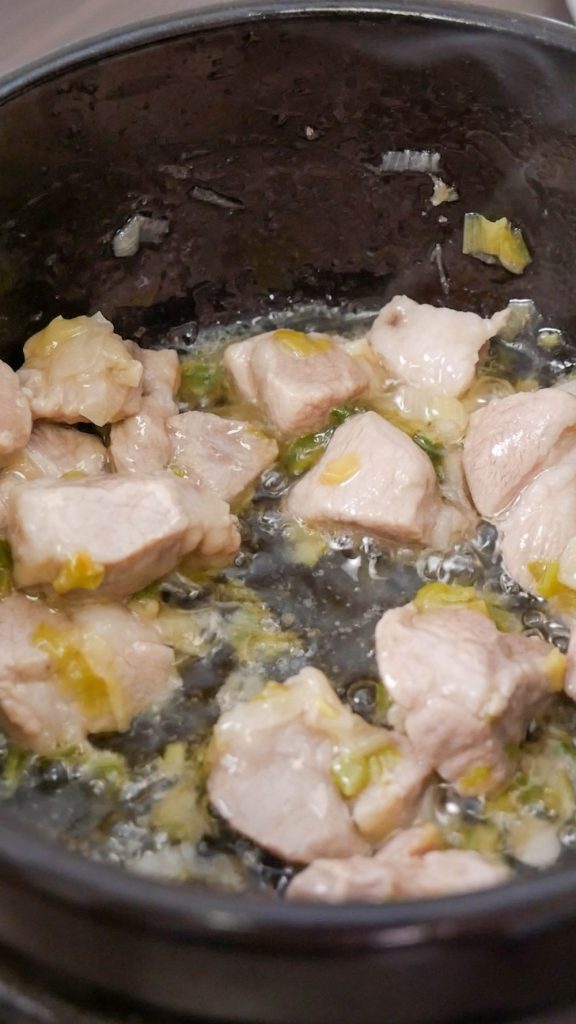
Toss the cubed pork into the pot and cook until the pork is no longer visibly pink.
Step 5: Add the gochugaru
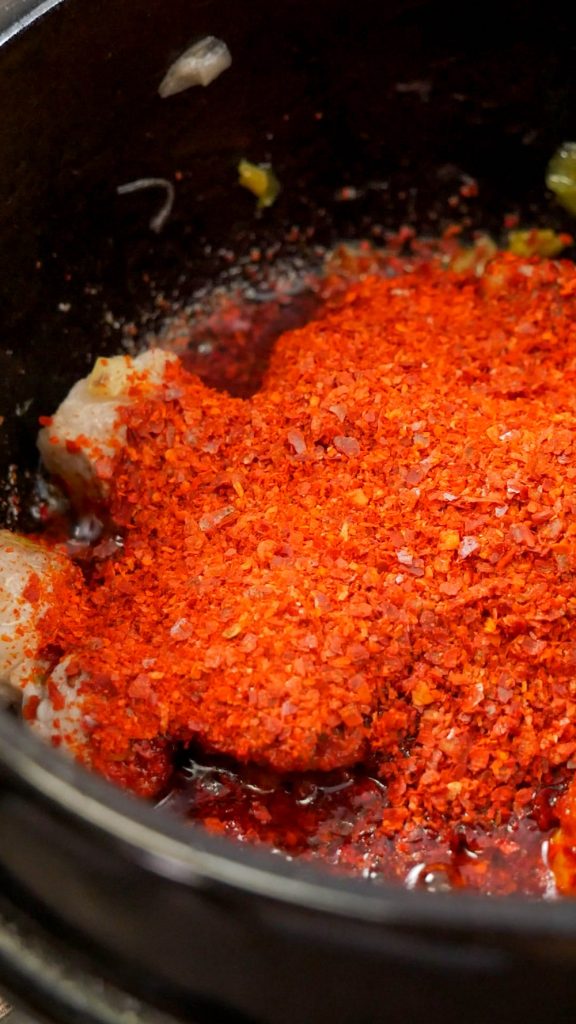
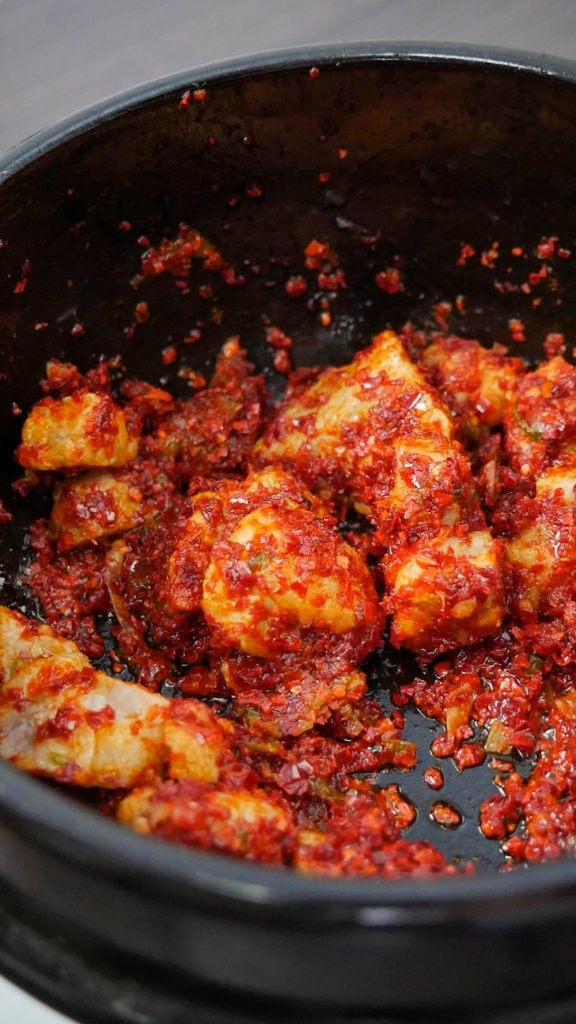
Reduce the heat to the lowest setting then add gochugaru. Stir continuously for about 1 minute, making sure they don’t burn.
Step 6: Pour in broth & add the rest of the ingredients
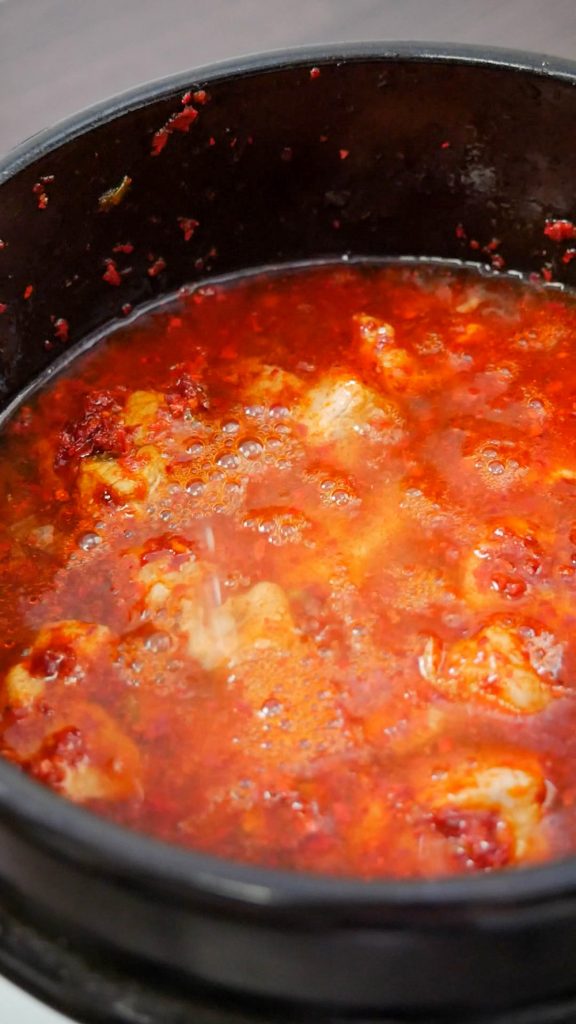
Pour in the anchovy broth then bring to a boil over medium heat.
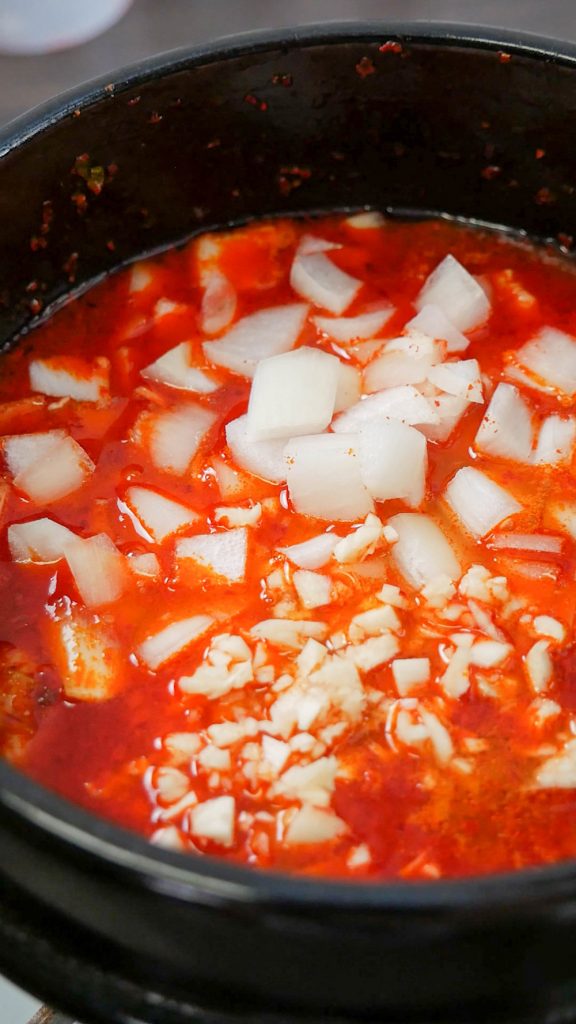
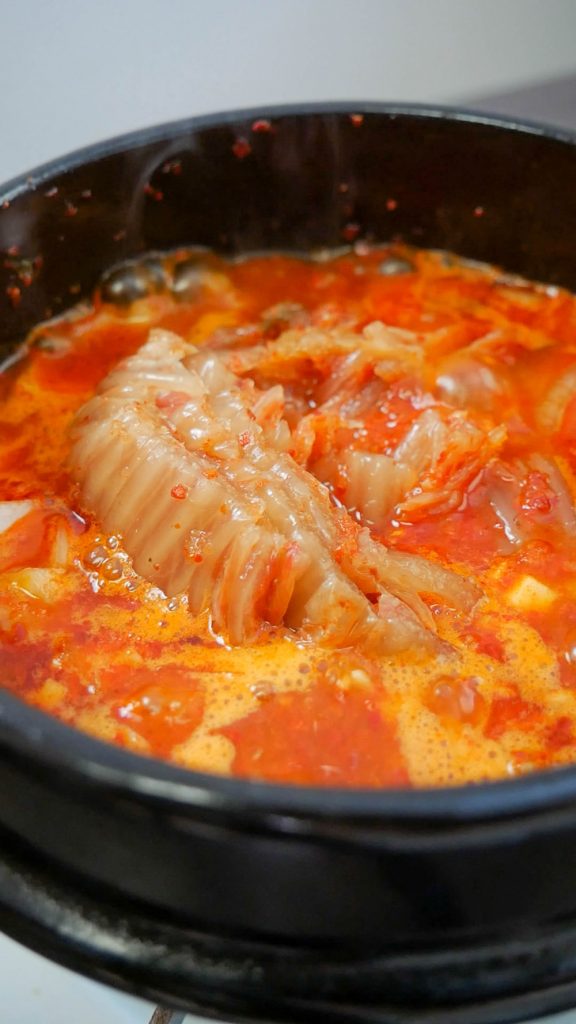

Add onions, garlic, kimchi, and fish sauce.
Simmer for 5 to 10 minutes or until the kimchi and vegetables have softened to your liking.
Step 7: Add the tofu
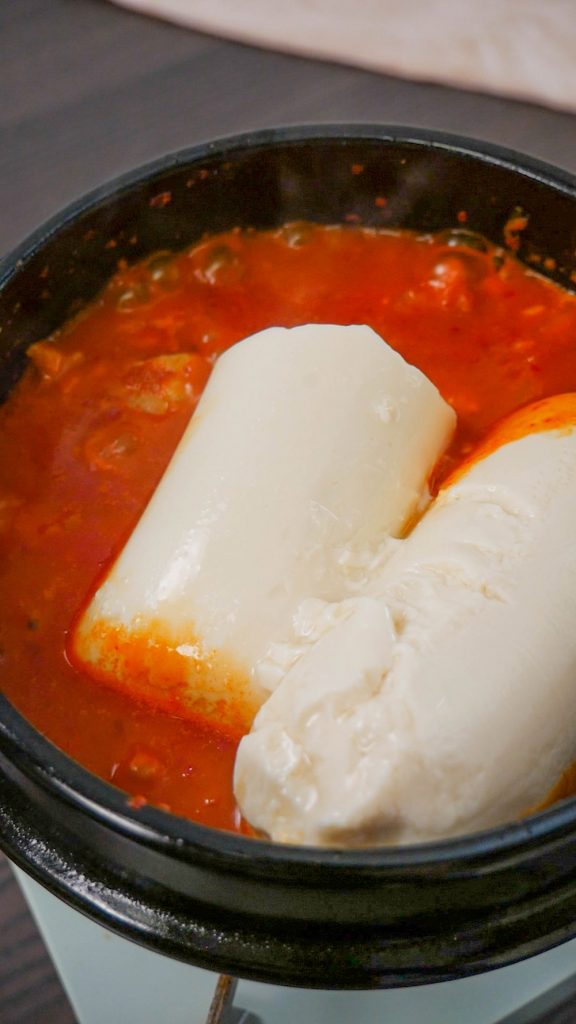
Carefully add the silken tofu. Then, cover and simmer for 2 to 3 minutes.
Step 8: Crack an egg & Garnish
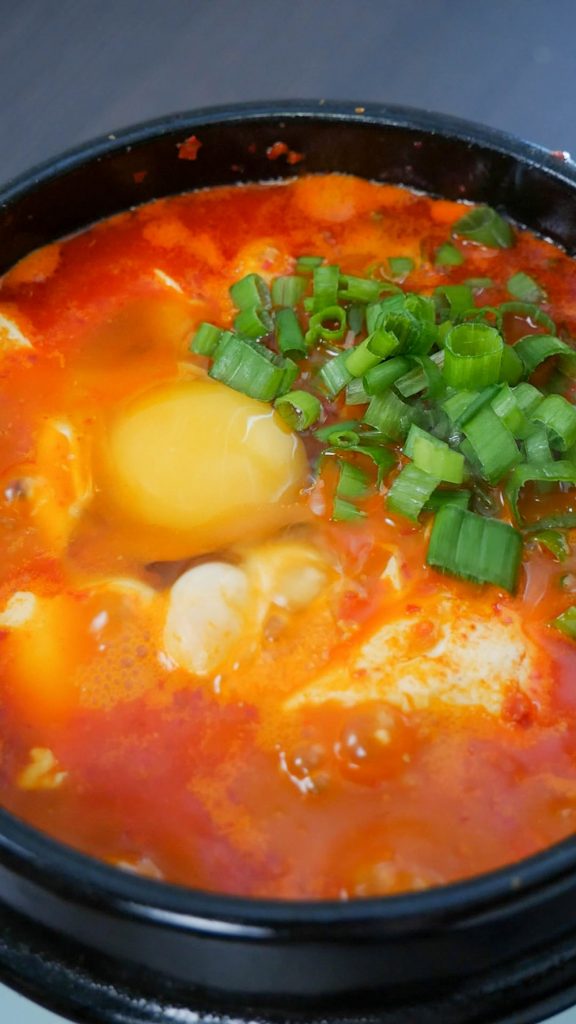
Crack an egg into the jjigae and garnish with the green part of the scallions.
Step 9: Serve!
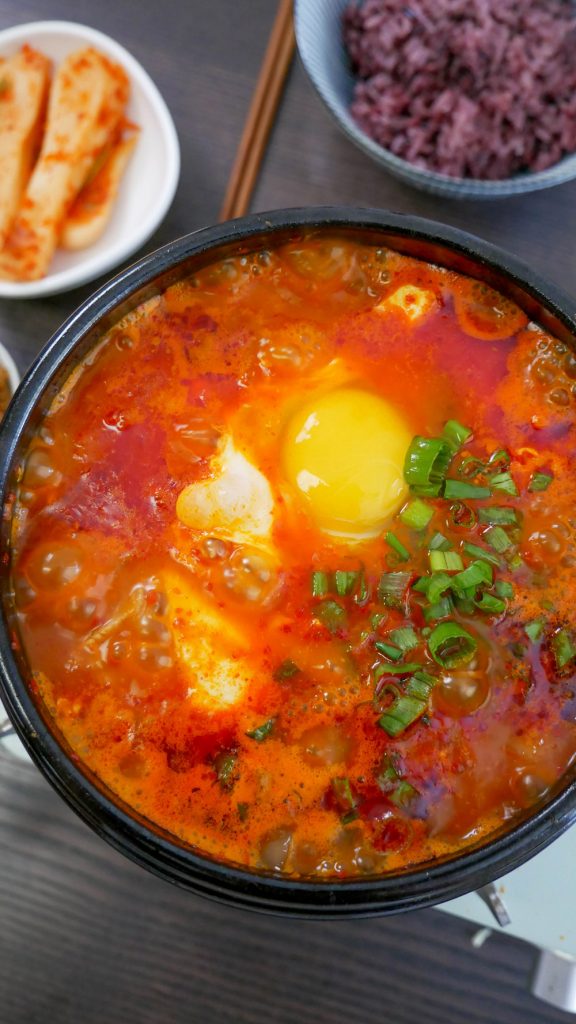
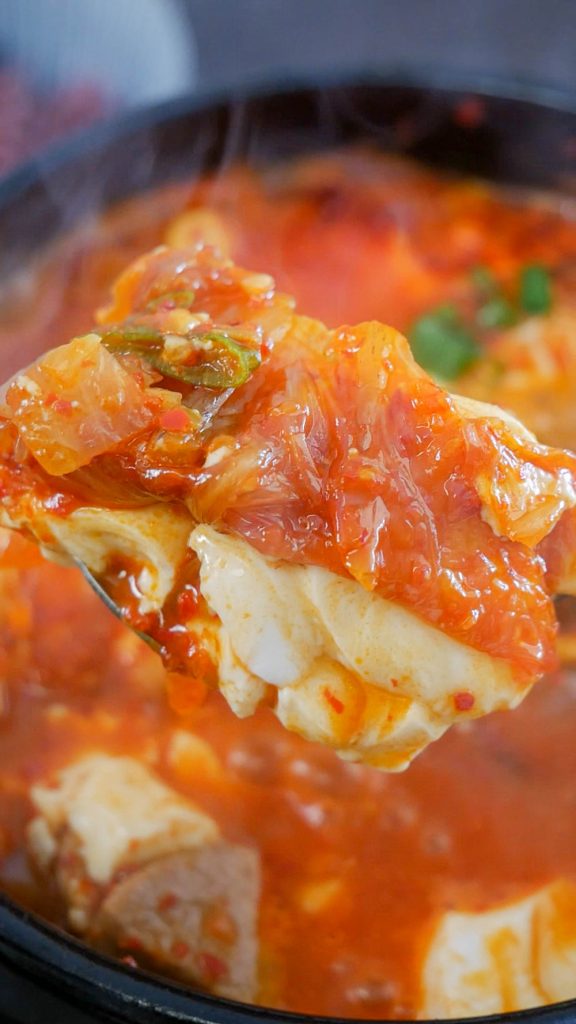
Serve with a fresh bowl of rice and enjoy!
Cooking Tips for Kimchi Soondubu Jjigae
Kimchi soondubu jjigae is very easy to prepare, but to ensure that it comes out delicious and perfect every time, keep these tips and tricks in mind!
- Soondubu jjigae is traditionally prepared and served in a ddukbaegi (Korean earthenware pot). It retains heat for much longer, which keeps the jjigae warm for an extended period of time. Personally, I think it tastes better when served in a ddukbaegi but I might be biased lol. If you don’t have a ddukbaegi, you can just use a regular pot.
- Use well-fermented sour kimchi. The more sour, the better! This will add a substantial amount of flavor compared to unfermented/fresh kimchi. If you don’t have fermented kimchi available, you can add a few teaspoons of white vinegar to your kimchi.
- I recommend using marbled and fatty cuts of pork like pork shoulder or pork belly. This will add richness and more flavor to the stew.
- Be sure to adjust the spiciness based on your spice tolerance. For a milder stew, reduce the amount of gochugaru. For a spicier stew, increase the amount of gochugaru. You can also add spicy chili peppers for an additional kick.
- The silken soft tofu is incredibly delicate so you want to make sure you’re happy with the seasoning before adding the tofu. You want to avoid mixing the stew after the tofu is added, otherwise, it will break apart.
- Feel free to add your favorite ingredients including zucchini, mushrooms, and even assorted seafood.
Ingredients & Substitutions
Silken tofu (soondubu): traditional soondubu jjigae is made with silken tofu – the softest and silkiest tofu variety. It is usually sold in tubes instead of blocks like the majority of tofu.
Pork shoulder: pork is a classic ingredient in soondubu jjigae. I prefer using pork shoulder but you can also use pork belly as well. If you wanted to make this vegetarian-friendly, just skip the pork!
Scallions: scallions are a crucial ingredient in soondubu jjigae because the white parts are used to make scallion oil. The scallion oil adds a subtle hint of smokiness to the stew. If you’ve ever seen soondubu jjigae, you might have noticed a thin layer of red oil on top – that’s the scallion and gochugaru-infused oil! Reserve the green part of the scallions for garnish.
Onions: onions are also a staple ingredient in this stew. When cooked down, it adds a touch of sweetness.
Garlic: the garlic adds a delightful aroma and flavor to the stew. While this is optional, I highly recommend adding it!
Kimchi: ideally, you want to use well-fermented and extra sour kimchi for this recipe. If you don’t have well-fermented kimchi available, mix in a few teaspoons of white vinegar to your kimchi.
Gochugaru (Korean red chili flakes): the gochugaru is what makes this stew spicy. If you have a low spice tolerance, reduce the amount of gochugaru added. If you prefer a spicier stew, increase the amount of gochugaru.
Fish sauce: fish sauce is used to season the stew. You can also use soup soy sauce or salt to flavor the jjigae.
Neutral oil: feel free to use any neutral oil you have on hand, including vegetable, canola, corn, avocado, grapeseed, or sunflower seed oil. I don’t recommend using flavored oils like olive oil.
Anchovy broth: using anchovy broth is the traditional way of preparing this jjigae. You can substitute it with vegetable broth, chicken broth, or water.
Egg: in my opinion, soondubu jjigae is incomplete without the egg! Right before serving, crack an egg on top and serve!
Frequently Asked Questions
What is soondubu in Korean?
Soondubu is translated in Korean as ‘extra soft tofu’. It’s a tofu variation that is distinctly softer and silkier than other tofu varieties. Soondubu is usually sold in tubes instead of blocks and can be purchased at Korean supermarkets like H Mart.
Can I use other types of protein?
Yes, absolutely! Pork is the most common protein used for soondubu jjigae however, you can essentially use any type of protein that you like, including beef, chicken, seafood, or just tofu! Keep in mind that the flavor profile of the stew will slightly differ depending on the type of protein used. For example, if making a seafood soondubu jjigae, it’ll have a seafood and oceany taste.
Can I make Kimchi Soondubu Jjigae vegetarian?
Yes! To make this stew vegetarian-friendly, omit the pork and substitute the anchovy broth with vegetable broth. Feel free to add a variety of your favorite vegetables including zucchini, assorted mushrooms, and more!
What is the best type of kimchi to use for this stew?
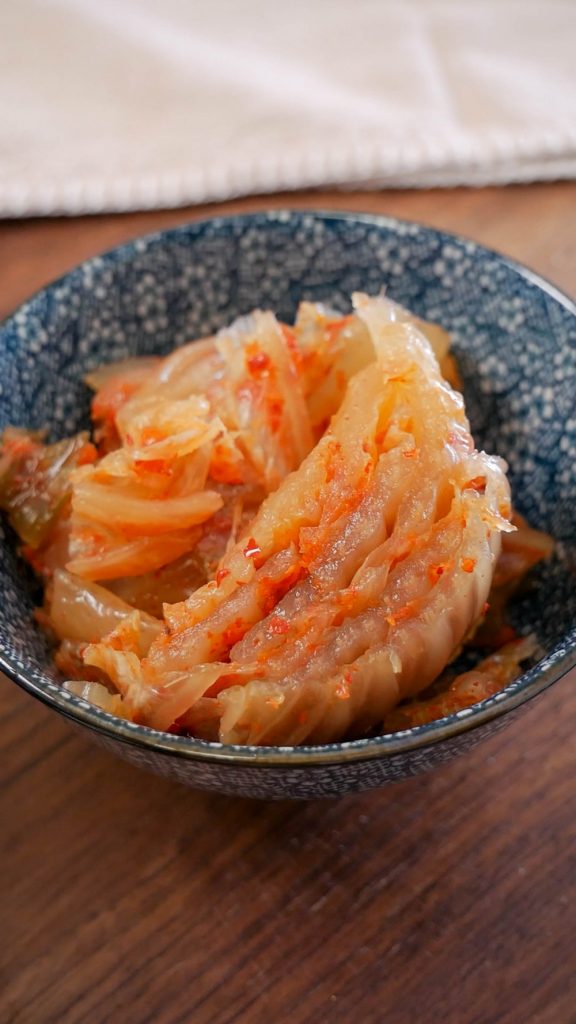
For this recipe, you’ll want to use well-fermented kimchi, which is extra sour and tangy in taste. This flavor profile is essential because it adds depth and umami to the stew. If you don’t have well-fermented kimchi on hand, you can add a few teaspoons of white vinegar to your kimchi and it should be ready to use!
Is Kimchi Jjigae the same as soondubu?
While kimchi jjigae and soondubu may look similar, they are actually quite distinct. The main ingredient in kimchi jjigae is kimchi, hence the name ‘kimchi stew’. In soondubu jjigae, however, the main ingredient is the soft and silky tofu, hence the name ‘extra soft tofu stew’. In terms of flavor, soondubu jjigae has a more delicate flavor than kimchi jjigae. Because kimchi jjigae requires a larger quantity of well-fermented kimchi, it’s bolder, richer, and heartier than soondubu jjigae.
Check out my Kimchi Jjigae recipe!
Looking for more easy and delicious Korean-inspired recipes?
Check out my all-time favorite recipes below!
1. Korean Pork Bone Soup – Also known as ‘gamjatang‘, this is the ultimate Korean comfort food! It’s a hearty and comforting dish made with tender fall-off-the-bone meat, and an assortment of vegetables, served in a spicy flavorful soup.
2. Korean Seafood Pancake – This savory pancake is a classic favorite! It’s soft on the inside, crispy on the outside plus, it’s packed with scallions and tons of seafood.
3. Bossam (Korean Boiled Pork Belly) – this is a popular Korean dish made with pork belly that has been boiled in various seasonings and aromatics. It is cooked low and slow, resulting in a flavorful, tender, melt-in-your-mouth bite!
4. Korean Chicken Gizzard – Korean chicken gizzards or ‘dak dong jib’ is one of the most popular Korean appetizers. Great to have with a glass of cold beer, soju, or makgeolli!
5. Rose Tteokbokki – Rose tteokbokki is tteokbokki’s modernized sister – she’s creamy, smoky, and mild in spice with a beautiful rosy pink-colored sauce. It’s incredibly indulgent and the perfect treat-yourself-meal.
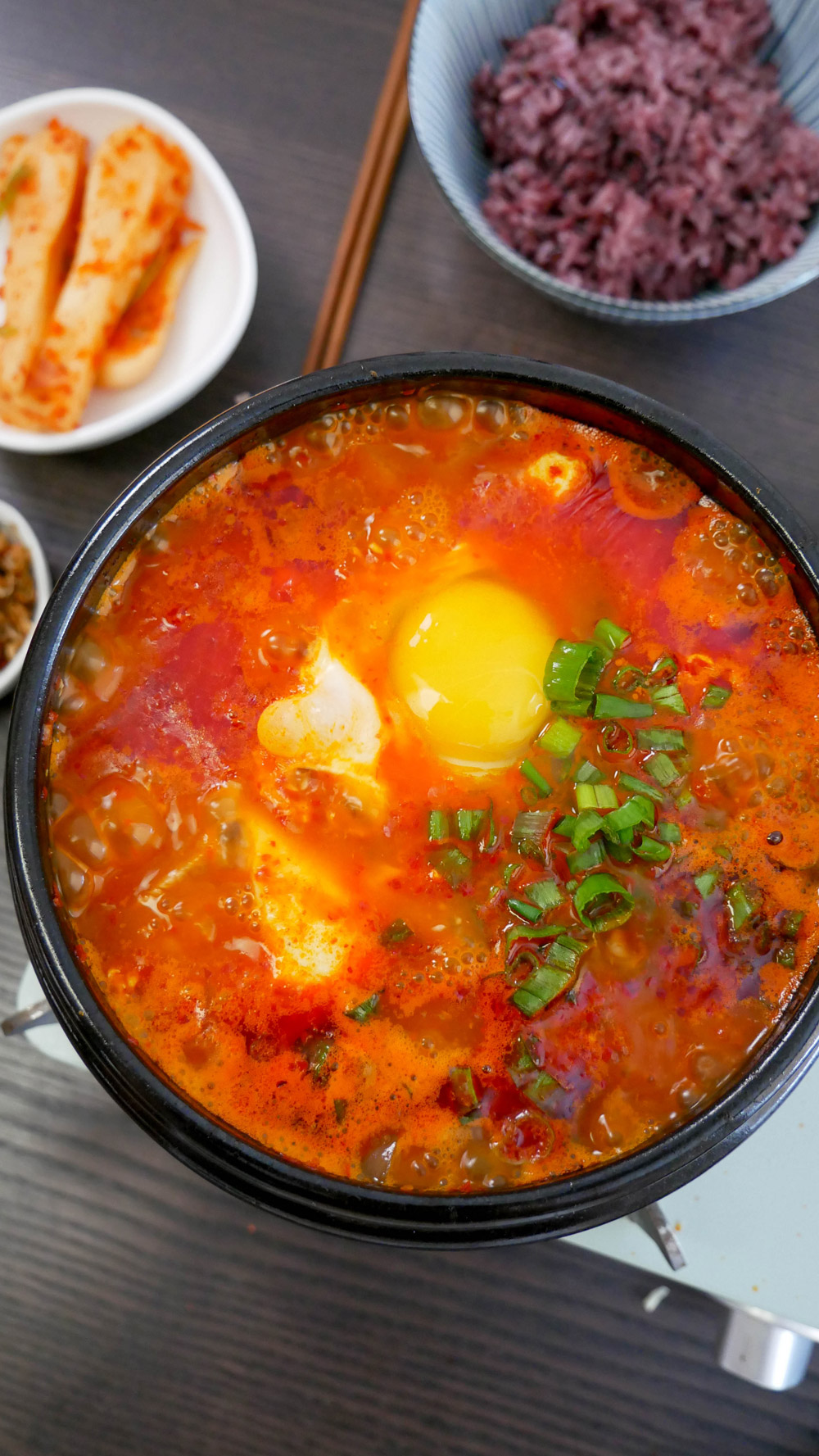
Kimchi Soondubu Jjigae
Ingredients
- 1 packet soondubu silken tofu
- 4 oz pork shoulder cut into 1-inch cubes, substitute with pork belly
- 3 scallions chopped chopped, white and green part separated
- 1/4 cup onion diced
- 2 garlic cloves minced
- 1/4 cup kimchi
- 2 1/2 tbsp gochugaru adjust according to your desired spice level
- 1 tbsp fish sauce adjust to taste
- 3 tbsp neutral oil
- 1 cup anchovy broth
- 1 egg optional
Anchovy Broth
- 4 1/2 cups water
- 1/4 onion
- 7 dried anchovies innards removed
- 3 dried kelp about 2×2 inches each
Instructions
Anchovy Broth
- In a medium-sized pot, combine water, onion, dried anchovies, and kelp. Boil over medium heat for 20 minutes or until reduced by half.
- Strain then set aside until it's ready to be used.
Kimchi Soondubu Jjigae
- Heat a ddukbaegi or pot over medium-low heat. Add oil and the white part of the scallions. Cook for 2 to 3 minutes, taking care not to burn the scallions.
- Toss in the cubed pork shoulder and cook until the pork is no longer visibly pink.
- Reduce the heat to the lowest setting then add gochugaru. Stir continuously for about 1 minute, making sure they don't burn.
- Pour in the anchovy broth then bring to a boil over medium heat. Add onions, garlic, kimchi, and fish sauce. Simmer for 5 to 10 minutes or until the kimchi and vegetables soften to your liking.
- Carefully add the tofu. Then, cover and simmer for 2 to 3 minutes.
- Crack an egg into the jjigae and garnish with the green part of the scallions.
- Serve with a fresh bowl of rice & enjoy!